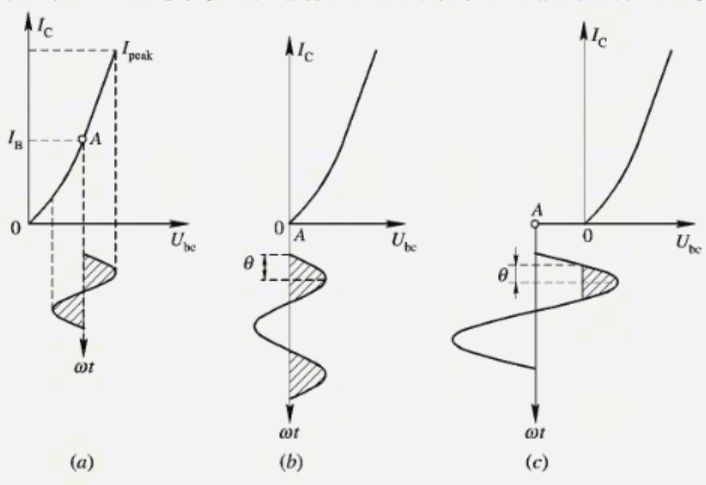Classes of Power Amplifier
Amplifiers are an essential component in RF and RF systems which can be divided into low noise amplifiers, high gain amplifiers, medium power amplifiers and high power amplifiers. It can be classified into class A, AB, B, C according to their construction and operating characteristics.

Class A amplifiers are high gain amplifiers with high linearity. Class A amplifiers are used for small-signal, low-noise, usually the pre-amplifier of receiver front-end amplifiers or power amplifiers. Class AB amplifier combines the advantages of the Class A amplifier and the Class B amplifier producing a better amplifier design. Class B and Class C amplifiers have high power efficiency and high harmonic content of the output signal, requiring an external mixing circuit or filter circuit. Here we will explore different classes of amplifiers along with their advantages and disadvantages.
Class A Amplifier
Class A amplifiers are considered the best class of amplifier design due mainly to their excellent linearity, high gain and low signal distortion levels when designed correctly.The conduction angle of class A amplifier is 360 degree, a maximum theoretical efficiency of 25% is obtainable using usual configurations (the best is 50%, theoretically).
Advantages of Class A Power Amplifiers
- Highest Linearity
- No distortion
- The output is same as input
- Low signal distortion level
- Simple design
Disadvantages of Class A Amplifiers
- Low efficiency
- High power Loss
Class B Amplifier
Class B amplifiers are dramatically more efficient than class A amplifiers. The conduction angle of class B amplifier is 180 degrees. Theoretical maximum efficiency of Class B power amplifier is 78.5%. The class B amplifiers are the positive and negative halves of the signals, that are allocated to the different parts of the circuits and the output device switched ON and OFF continuously. The basic class B amplifiers are used in two complementary transistors which are FET and bipolar.
Advantages of Class B Power Amplifiers
- Low standing bias current
- More powerful outputs than class A
- More efficient than class A
Disadvantages of Class B Amplifiers
- Cross-over distortion
- More distortion than Class A
Class AB amplifier
The Class AB amplifier the conduction angle is slightly more than 180° but much less than 360° depending upon the amount of additional biasing used. Class AB power amplifiers have the efficiency reaching about 50% to 60%. As class A has the problem of low efficiency and class B has distortion problem, this class AB is emerged to eliminate these two problems, by utilizing the advantages of both the classes.
Advantages of Class AB Power Amplifiers
- Less harmonic distortion
- High efficiency than class A
- Elimination of cross-over distortion
Disadvantages of Class AB Amplifiers
- More costs
- More complex circuit construction
- Lower efficiency than class B
Class C Power Amplifier
The conduction angle for class C is less than 180°. It is generally around 90°, which means the transistor remains idle for more than half of the input signal. The efficiency of class C amplifier is high while linearity is poor.
KeyLink Microwave can provide the above four types of RF power amplifier module, our products include broadband power amplifiers, narrowband RF amplifiers, pulsed high power amplifiers and RF amplifier systems.
In RF applications demanding higher power and ...
KeyLink's current special offer focuses on its...
KeyLink, a leading RF technology company, officially launched its "Express De...
KeyLink's 8-12GHz (X-band) Solid-State Power A...






![[This Week's Featured Product] 8-12GHz Full-Band RF Power Amplifier Modules](https://cdn.keylinkwireless.com/images/article/69e9063f-ed5b-424e-bb27-05f1ec4cf323.jpg)